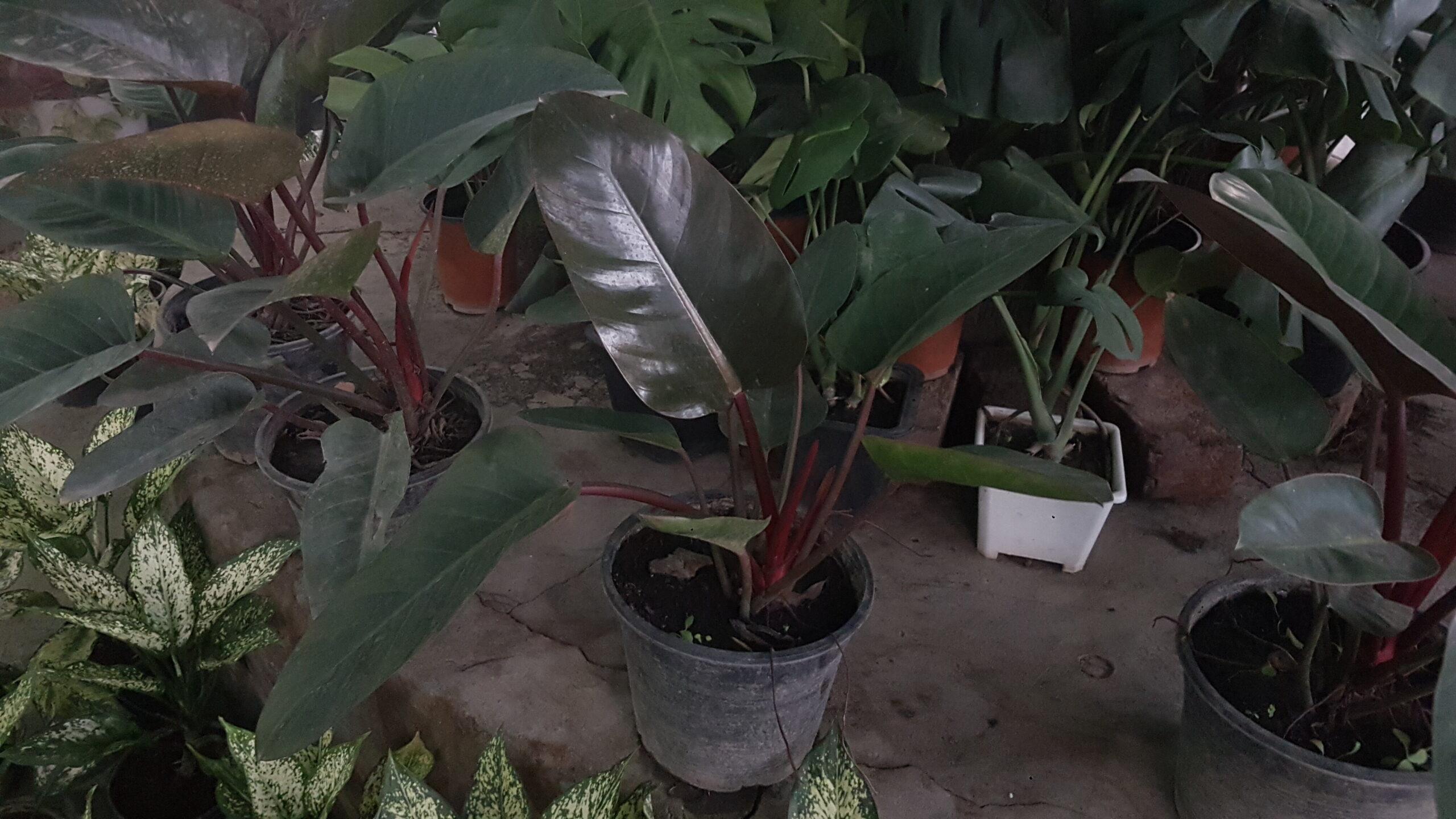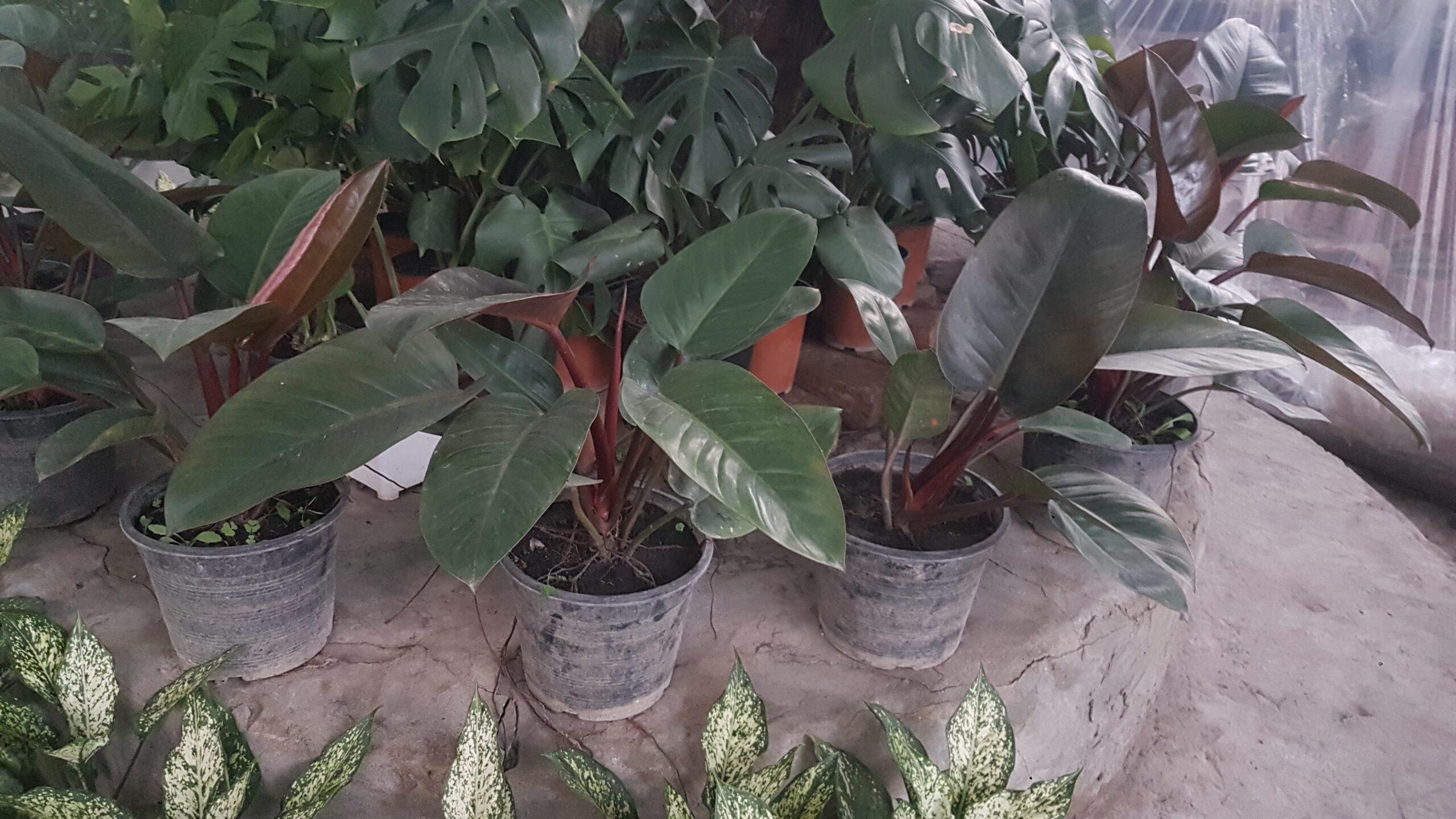The name “philodendron Red” comes from the Greek words “Philo” meaning love and “dendron” meaning tree. Some popular species of philodendrons include the heartleaf philodendron, the split-leaf philodendron, and the velvet-leaf philodendron.
Philodendron, a genus of plants in the Araceae family, consists of over 400 species ranging from small trailing vines to large upright trees that are native to tropical and subtropical regions of the Americas.
Due to their appealing foliage and low maintenance, Philodendron plants are popular as indoor plants. The leaves vary in shape, such as heart-shaped, oval, or lanceolate, and can range in color from dark green to
variegated.
Most Philodendrons are climbing plants that use aerial roots to climb trees. In indoor settings, they can be trained to climb up moss poles or trellises. However, some species of Philodendrons grow as shrubs or groundcovers. Philodendrons are also known for their air-purifying qualities. They can remove pollutants such as formaldehyde, benzene, and xylene from the air.
In addition to their attractive foliage, philodendrons can also produce flowers. However, the flowers are typically hidden within the foliage.
Philodendrons prefer bright, indirect light and well-draining soil, and they can tolerate a wide range of temperatures
and humidity levels, making them an ideal choice. Direct sunlight can scorch their leaves, whereas too little light can cause slow growth and leggy stems. To prevent root rot, allow the top inch of soil to dry out between waterings. During the dormant phase in winter months, water is less frequent. A good potting mix for Philodendrons should contain peat moss, perlite, and vermiculite, all of which are well-draining and rich in organic matter. Once a month during the growing season, fertilize with a balanced, water-soluble fertilizer.
Philodendrons can be propagated easily through stem cuttings.
Choose a healthy philodendron plant with several stems and select a stem that has at least two nodes, which are small bumps on the stem where the leaves emerge.
Use scissors to make a clean cut just below the node. Remove the lower leaves from the cutting, leaving at least two leaves at the top. This will help the cutting to focus its energy on developing new roots. Place the cutting in a jar or glass of water,
making sure that the cut end is submerged and the leaves are not touching the water.
Keep the cutting in a bright, indirect light and change the water every few days, After a few weeks, the cutting should develop roots.
Once the roots are about an inch long, it’s ready to be planted in soil.
While philodendrons are generally easy to care for, they can be susceptible to pests such as spider mites and mealybugs.
Regularly inspecting the plant and treating any infestations promptly can help keep the plant healthy.
While Philodendrons prefer high humidity levels, they can tolerate average room humidity. You can increase humidity around the plant by misting it regularly, placing a humidifier nearby, or setting it on a tray of pebbles and water.
Repot the plant every 2-3 years or when the roots have outgrown the pot, using a pot that is slightly larger than the previous one and a fresh potting mix.
Note that some species of Philodendrons can be toxic to pets and humans if ingested. Therefore, it is important to
research specific species before bringing one home. By adhering to these care instructions, you can ensure your
The Philodendron plant thrives and becomes a beautiful, healthy plant.








Reviews
There are no reviews yet.